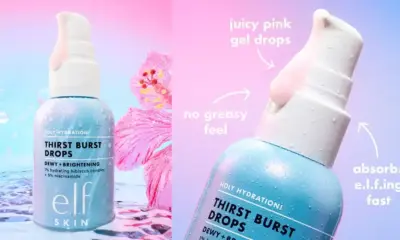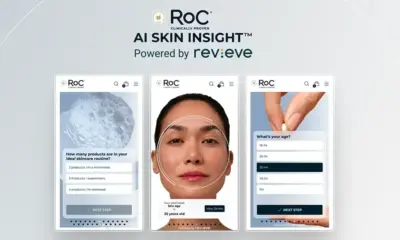Oral Health
Unilever and Takasago observe consumer trends in oral care shifting towards hygiene, health, and innovative flavors
Oral care is increasingly becoming a significant focus within the personal care sector, as more consumers prioritize the health and aesthetics of their teeth.

Unilever and Takasago explore their innovative strategies in response to this rising consumer demand. Unilever and Takasago observe consumer trends in oral care shifting, indicating that brands are adapting to meet these evolving preferences.
Dominique Aubert, senior marketing executive at Takasago, stated, “We witness several compelling trends across major oral care market segments, each reflecting unique consumer preferences and cultural influences.” He noted that many brands are promoting themselves as more than just basic products, claiming benefits like “whitening” or “clean breath” to position oral care alongside personal beauty products such as skincare. Furthermore, consumers increasingly favor personalized oral care solutions over a single toothpaste for the whole family.
Trends in Oral Care
Takasago has identified robust growth in the Japanese oral care market, primarily fueled by rising demand for premium products and a growing number of seniors seeking specific functional toothpaste to maintain their natural teeth. Aubert emphasizes that the functional benefits of oral care products are a central focus, as consumers look for solutions to cavity prevention, hypersensitivity, whitening, and fresh breath. Unilever and Takasago observe consumer trends in oral care shifting, particularly in Asian markets, where these needs are becoming more pronounced.
Courtesy of Envato
Echoing this sentiment, Gaurav Datta, Unilever’s Global Brand VP of Oral Care, remarked, “We are increasingly seeing people move beyond basic oral care needs and demand more from their products, especially in Asia. The combination of beauty and oral care is one of the fastest-growing trends.” As consumers invest more in the appearance of their smiles, new home oral care routines are emerging. Moreover, as part of the broader wellness movement and increased life expectancy, people are actively seeking solutions for advanced issues like periodontitis and enamel care.
Flavor Innovations
Aubert notes an evolution in flavor preferences among consumers. While cooling mint remains the standard flavor associated with toothpaste, he observes that consumers are also seeking new options, such as fruity mint and herbal mint. He points out the growing popularity of non-alcohol mouthwashes that offer a gentler experience, alongside refreshing single fruit, floral, and herbal flavors that align with the “Fruit 3.0” and “Botanical Realm” trends identified in Takasago’s “Global Pulse Trendseeds 2024 Report.”

Courtesy of Unilever
“Products free from harmful ingredients will become more prevalent, and sensational layers providing cooling, warming, or mood-enhancing effects will rise,” asserts Aubert. He further notes that premium, vitamin- and mineral-fortified botanical products will target specific groups, including pregnant women and different age demographics. Unilever and Takasago observe consumer trends in oral care shifting toward natural ingredients and floral flavors, emphasizing a ‘back to basics’ approach in oral care.
Predictions for Oral Health
Unilever anticipates that oral hygiene will increasingly connect to systemic health. Datta explains, “As the link between oral hygiene and overall health strengthens, consumers want to ensure their oral care products are effective and will increasingly research the science behind their toothpaste to meet their specific needs.” This trend is driven by the easy access to information and a growing interest in the oral microbiome’s impact on overall health. In response, Unilever is concentrating on enhancing brand superiority and expanding multi-year innovations to refine its oral care portfolio.
“With people living longer, there is a greater desire to look and feel their best, and a smile is a vital part of overall self-confidence. We believe that consumers will continue to invest more in oral hygiene, care, and beauty,” adds Datta.
Regional Insights
In Japan, Takasago anticipates a continued emphasis on high-functionality products that blend appealing flavors with cute and aesthetically pleasing packaging. The use of premium natural flavor ingredients, such as aroma oils, is expected to rise. Aubert emphasizes that sustainable and stylish packaging will remain priorities, alongside flavor trends that cater to sophisticated palates, including citrus-like mint and botanical teas.
The Korean market is poised for further growth in premium toothpaste, mirroring trends in Japan and China, with products featuring functional and “unique” ingredients. Aubert notes that the market, which has undergone significant changes due to the emergence of new brands, will continue to prioritize premium offerings aimed at young adults in their 20s and 30s. Functional benefits, particularly in gum disease prevention and breath control, will influence product selection. Unilever and Takasago observe consumer trends in oral care shifting toward personalized products that reflect a high interest in niche overseas brands.
“Whitening, hybrid claims, and emotional concepts will be complemented by innovative flavors such as sweet pudding and tropical fruits, alongside emotional flavors like jasmine mint and grapefruit mint. Clean, vegan, and sustainable products will also be key focus areas, incorporating beauty ingredients like Cica (Centella Asiatica),” explains Aubert.
The changing demographics in Japan, Korea, and China, including a shrinking population and more single-person households, lead Takasago to believe that the emphasis on mass-market family toothpaste will shift toward developing personalized premium toothpaste with greater value, enabling stable sales to offset declining volumes.
“In Europe, mainstream trends are emphasizing alcohol-free formulations, mineral enhancements like zinc, and long-lasting sensations. Added functionalities and ethical packaging solutions, such as refillable and recyclable options, will experience substantial growth,” notes Aubert.
“Emerging trends will include new product formats, a focus on natural ingredients, and increased personalization. Whitening and prebiotic and probiotic benefits will become more prevalent alongside vegan claims and natural extracts like lemon oil and hemp extracts.”
These anticipated trends and innovations suggest a future where oral care products are increasingly tailored to individual needs, environmentally conscious, and enriched with diverse and exciting flavors. This evolution aims to serve a more discerning and health-focused consumer base, driving the oral care market toward a more personalized and enjoyable experience.
Innovations in Oral Care
Recently, Unilever launched a new range within its Pepsodent portfolio, specifically targeting sensitivity issues, which the company claims is the result of a decade of research. Datta shares, “Our R&D team has developed a superior formula with active ingredients designed not only to alleviate sensitivity pain but also to address its underlying causes, reflecting our strategic focus on innovation and brand development.”
Takasago contributes that its Transatak and Deoatak technologies for malodor control, along with Aromahygiene’s synergistic approach to bacteria management, are key elements that promote a “fresh and clean” sensation. The company’s Vivid Flavors creates fruit flavors, while Mintact offers mint tastes and reduces raw material usage.
Another highlight from Takasago is its Intensates technology, which delivers cooling, warming, tingling, and salivating sensations in oral care products. The company has also conducted studies in regions like the US, China, and Southeast Asia to understand consumer preferences regarding various sensations, enabling them to blend different Sensates materials to suit those needs.
According to Takasago’s Global Pulse TrendSeeds report, “Balanced Mind” is among the leading global macro trends, prompting the development of “mood-stimulating” flavors. For instance, relaxation-inducing flavors are designed for slower brushers, while energizing flavors cater to those with a quicker brushing routine.






















